Billions lost, failed IT projects, and why it doesn’t have to be this way
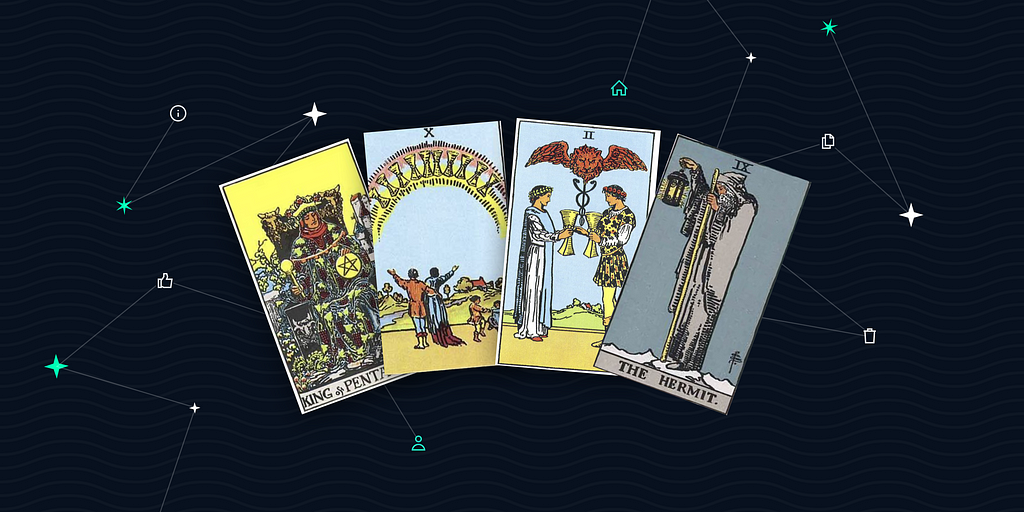
As a UX researcher by day and a witchy-curious person by night, I’ve been fascinated by tarot for years. While studying the cards, I uncovered a connection between tarot and the way design professionals find patterns and solve problems.
Understanding how symbolism, storytelling, and inspiration relate to tarot and design can give us a framework for finding deeper meaning in our work and our lives. Ultimately, tarot is the human experience in a deck of cards. If we seek to design for the human experience, we can learn from tarot.
Pip, pip, major arcana
Tarot cards are much more than props for charlatans or new age nonsense. They have a rich history that reflects our very human desires for fun, beauty, meaning, and mystery. Looking into the cards’ past can help us understand their present, and how we should use them in the future.
The origins of tarot stretch back to 1400s Milan during the Italian renaissance. The Visconti and Sforza families commissioned Bonifacio Bembo and other artists to paint a series of playing cards. These cards were designed to play ‘Tarocchi,’ which required four suits of fourteen cards (pips and court cards), and twenty-two ‘trump’ or ‘trionfi’ cards. Today, we refer to pip and court cards as the Minor Arcana and trump cards as the Major Arcana.
Many of these tiny paintings have been lost to time, but enough remain to show us that tarot cards haven’t changed much throughout history. The Visconti-Sforza decks illustrate knights, kings, queens, and fools, along with death, charity, faith, and hope.
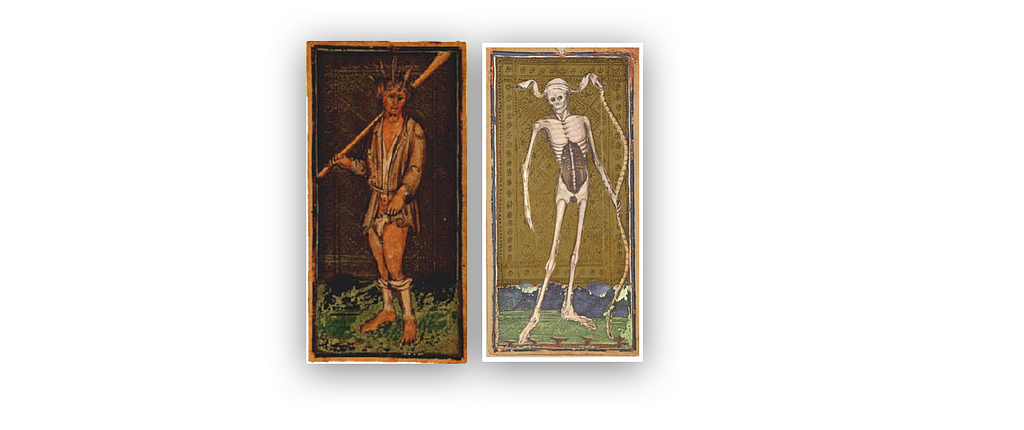
Centuries pass while tarocchi cards are primarily viewed as a tool for gambling. Then, in the 1700’s, French Enlightenment thinkers like Antoine Court de Gébelin watched Romani women tell fortunes with the tarocchi — in French, ‘tarot.’ Seeing archetypal themes in the cards, they argued that tarot draws from mystical Egyptian mythology and Jewish Kabbalah, and thus represent a connection to the divine.
Fast forward to early 1900s England. English occultist Arthur Edward Waite collaborated with illustrator Pamela Colman Smith to design the Rider-Waite-Smith deck, the most ubiquitous version of the deck referenced today. Unlike previous decks, each pip and court card was illustrated with a scene that spoke to the numerological and symbolic meaning of the card. These lush illustrations inspire tarot designers today, and they are the cards I will reference throughout the rest of this article.
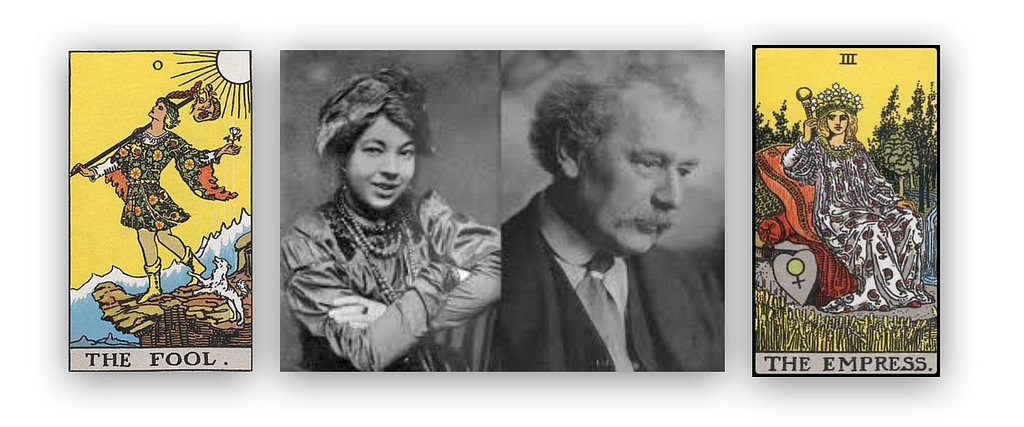
Symbolically speaking
Symbolism in tarot draws from a wide variety of sources, including (but not limited to): Egyptian, Greek, & Norse mythology, European paganism, early Christianity, Kabbalah, astrology, numerology, European history, elemental philosophy and color theory. This may seem overwhelming at first, but there is a method to decipher what a card is ‘telling you.’
The first key to understanding tarot is understanding the overall structure of the deck. The Major Arcana are the 22 cards that depict scenes of general human experience and beyond. Here you’ll find The Lovers, The Hanged Man, The Wheel of Fortune, and Death. These cards represent larger cosmic themes beyond the day-to-day mundanity of average life.
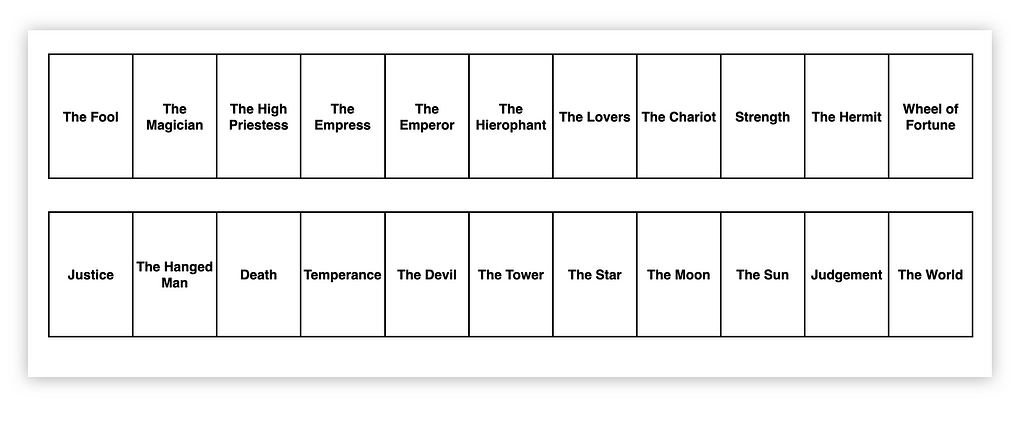
The Minor Arcana are the 56 cards that speak to our more daily existence. They are split into four suits (wands, cups, swords and pentacles) and each suit is made up of 10 pip cards and 4 court cards (king, queen, knight and page). The Minor Arcana may seem familiar, since wands = clubs, cups = hearts, swords = spades and pentacles = diamonds. Each suit has a meaning associated with it, and each number or court card has its own meaning based on numerology. So to understand the Minor Arcana, you can cross-reference a card’s suit symbolism with its number symbolism to get to its meaning.
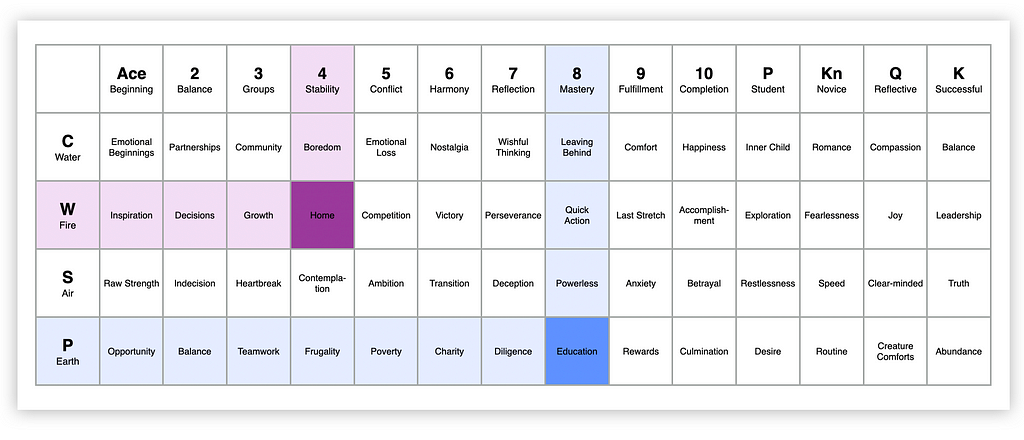
In general, symbols tap into something that helps humans make sense of life. We rely heavily on symbols to communicate to our users the intent of a design. In analyzing the famous Alessi kettle by Michael Graves, symbols abound. What is the kettle ‘telling you?’ The base of the kettle alludes to a clock, the songbird alludes to a rooster, and the round handle alludes to a sunrise. The symbols in the kettle tell you that this item is to be used in the morning. Additionally, taking into account the affordances of the plastic handle, knob and stopper, it’s ‘telling you’ where it’s safe to touch.
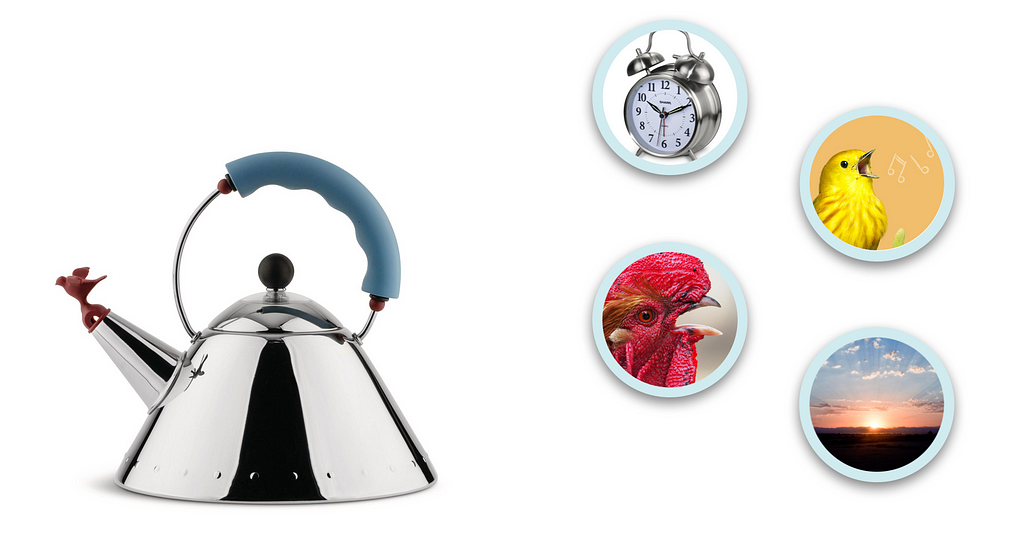
A more direct use of symbols can be found in the original Macintosh icons by Susan Kare. Since users were not yet familiar with a graphical user interface, Kare relied on real-life objects to symbolize actions. Bombs, trash cans, folders and suitcases all communicate to users how they should use a Mac.
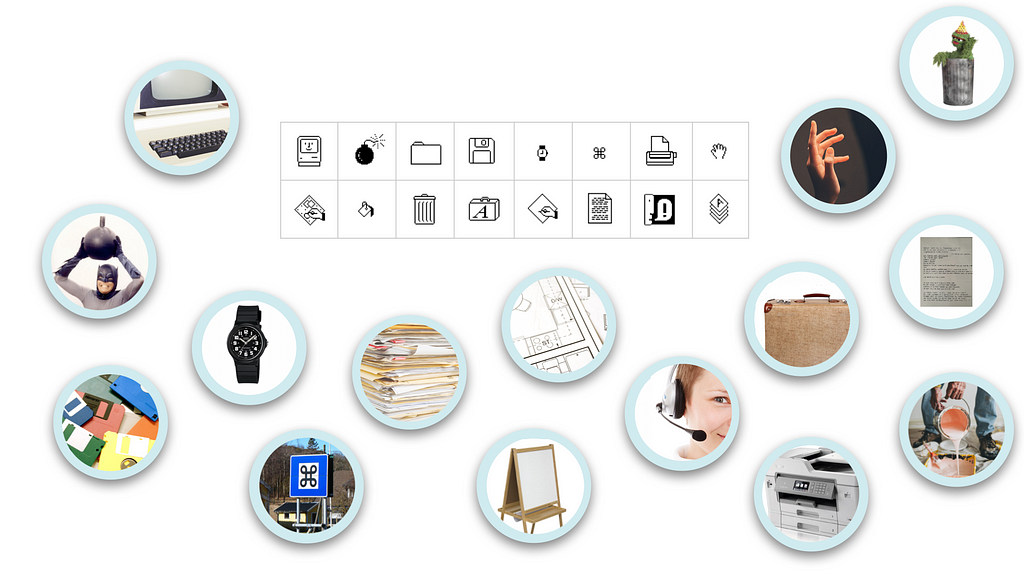
Symbolism is key to understanding: understanding tarot, and understanding the world around us. Without our very human ability to associate one thing with another thing, our road signs would all be text and our Ikea instructions would be completely indecipherable. We make sense of the world through symbols. As designers and researchers, we should aim to embed those associations into our products to ease the burden of onboarding, and imbue our work with a deeper meaning.
A story of storytelling
Tarot reading isn’t magic… necessarily.
A tarot reading consists of selecting and placing a set of cards in a predetermined spread that answers a query. These spreads can answer questions like ‘what should I keep in mind today?,’ ‘what should I do about my relationship?’ or ‘what is the core lesson of my life?’ Where a card falls in a spread determines its meaning. The meaning is derived from triangulating the symbolism of the card, against its location in the spread, against the question being asked and against the other cards in the spread.
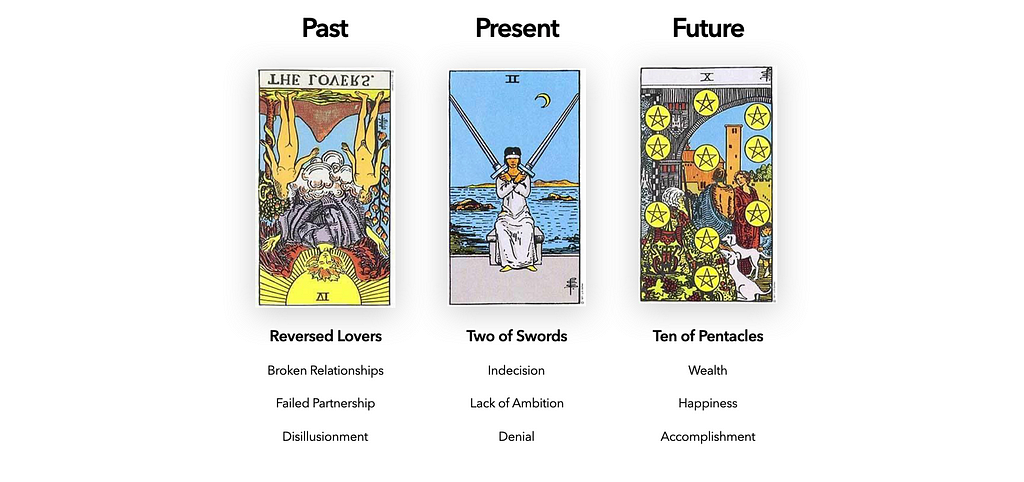
This is a form of thematic analysis, and researchers do it all the time. Thematic analysis involves coding and categorizing data to identify patterns in a spread of information. Tarot reading is basically thematic analysis with data (cards) already coded with metadata (symbols).
Tarot reading also involves an intuitive understanding around the context of the reading, much like how researchers must be able to recognize who, what, when, where and how data was collected. The same way a tarot reader may look at a spread and be able to discern the hidden meaning, so can a researcher with a collection of data to analyze.
This analysis leads us to stories, both in tarot and design. When you line up all of the Major Arcana cards, one interpretation of that spread tells the story of The Fool who moves through the human experience from birth to enlightenment, experiencing trials, tribulations and joy along the way. Any tarot spread is a story, too. The querent is the protagonist, and the cards lay out their journey.

Stories in design are vital to communicating across disciplines. They can describe a context or situation, like stories that are a part of personas. They can illustrate problems and “points of pain,” explaining why a new experience is needed. They can be the starting point for a design discussion, an exploration of a new design concept, or describe a new design. Most importantly, they can provide our stakeholders and team mates with a clear understanding of what we can do.
Humans are storytellers and listeners. The more your ‘pitch deck’ can invoke the feeling of sitting around a campfire, the better you’ll be able to maintain your audience’s attention, and bring them into your world of design solutions.
That said, humans are suggestible, and stories can open us up to narrative bias. This can be a positive in the world of tarot since the goal is to gain a deeper understanding of your own personal narrative. In the worlds of business, healthcare, and design, it can be dangerous. As design professionals, we are responsible for the way we frame our designs and insights, ensuring our stories are based on fact, not fiction.
Finding a spark
Tarot is a tool to get out of a rut. It encourages us to think about things in new ways, digging deeper to consider the root cause of a problem. There are countless ways to use tarot to explore new ways of thinking. You can pull a card a day to help center you on something specific for the next 24 hours. You can pull a spread when you’re stuck on making a decision. Writers can use tarot to inform character development. Artists regularly use tarot cards to pull themselves out of a creative funk, exploring tarot’s symbolism through their own unique lens.
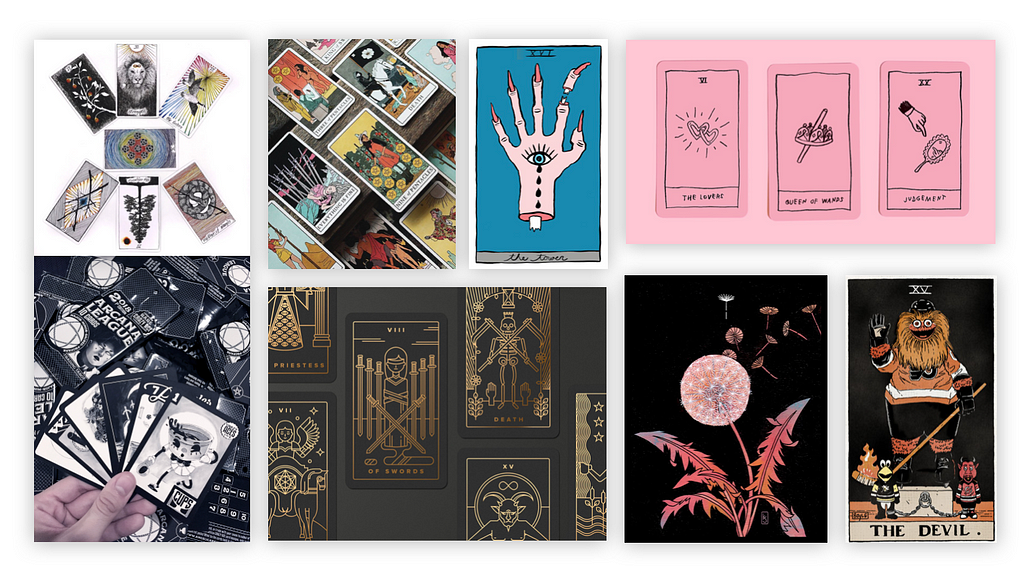
To get ourselves out of a rut in design, we often turn to discovery research. This style of research allows us to look at a product in a new way, finding information that may subvert our assumptions and uncover latent user needs that have yet to be met. Much like how tarot can get to the root of our personal challenges to spark change, research can bring us to the root of a product challenge to inspire a completely new solution.
Seeing the potential in tarot, designers and strategists at Artefact created The Tarot Cards of Tech that encourage us to “slow down and ask important questions of our work.” As a design educator, when I see that a student is struggling to communicate the ‘why’ behind their work, I’ll have them pick a card from this deck to force them to look at their project from a new angle.
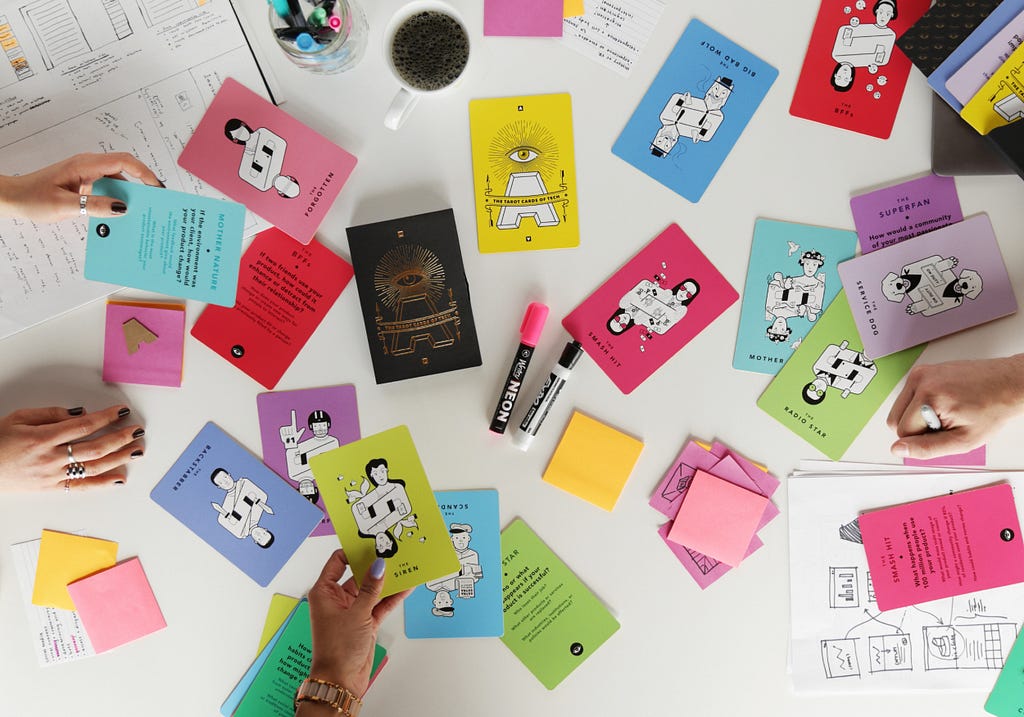
To further explore the spark of inspiration that tarot can provide, I shared a version of this article with my colleagues at Craft and asked them to create their own visualizations based on a single card’s symbolism. So many varieties of cards came from the activity, representing a kaleidoscope of experiences and interpretations.
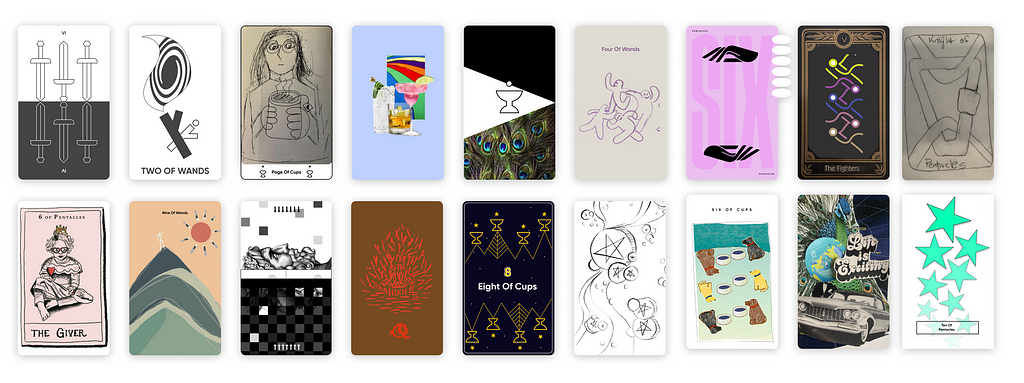
Tarot brings us out of our daily routine and forces us to think about the bigger picture. Tarot can help us think differently about our designs and our lives — all in a deck of cards.
Keep your cards close
As stacks of tarot cards pile up next to my research notebooks, the connection between them feels undeniable. The love I have for pattern recognition, problem solving, divergent thinking, and creativity brought me to design research as well as tarot.
Tarot is more than its perception in pop culture. It’s a tool that can be used for self discovery and gaining a better understanding of the human experience. As design professionals seek to understand themselves and design better products for the world at large, they should keep tarot in their toolbox. So go ahead, pick a card, and see where it takes you.
If you’re interested in learning more about tarot, its history, and its potential, I highly recommend the book Seventy-Eight Degrees of Wisdom by Rachel Pollack. It’s my go-to reference for everything tarot, including the information in this article.
Designing fortune: what can designers learn from the history of tarot? was originally published in UX Collective on Medium, where people are continuing the conversation by highlighting and responding to this story.

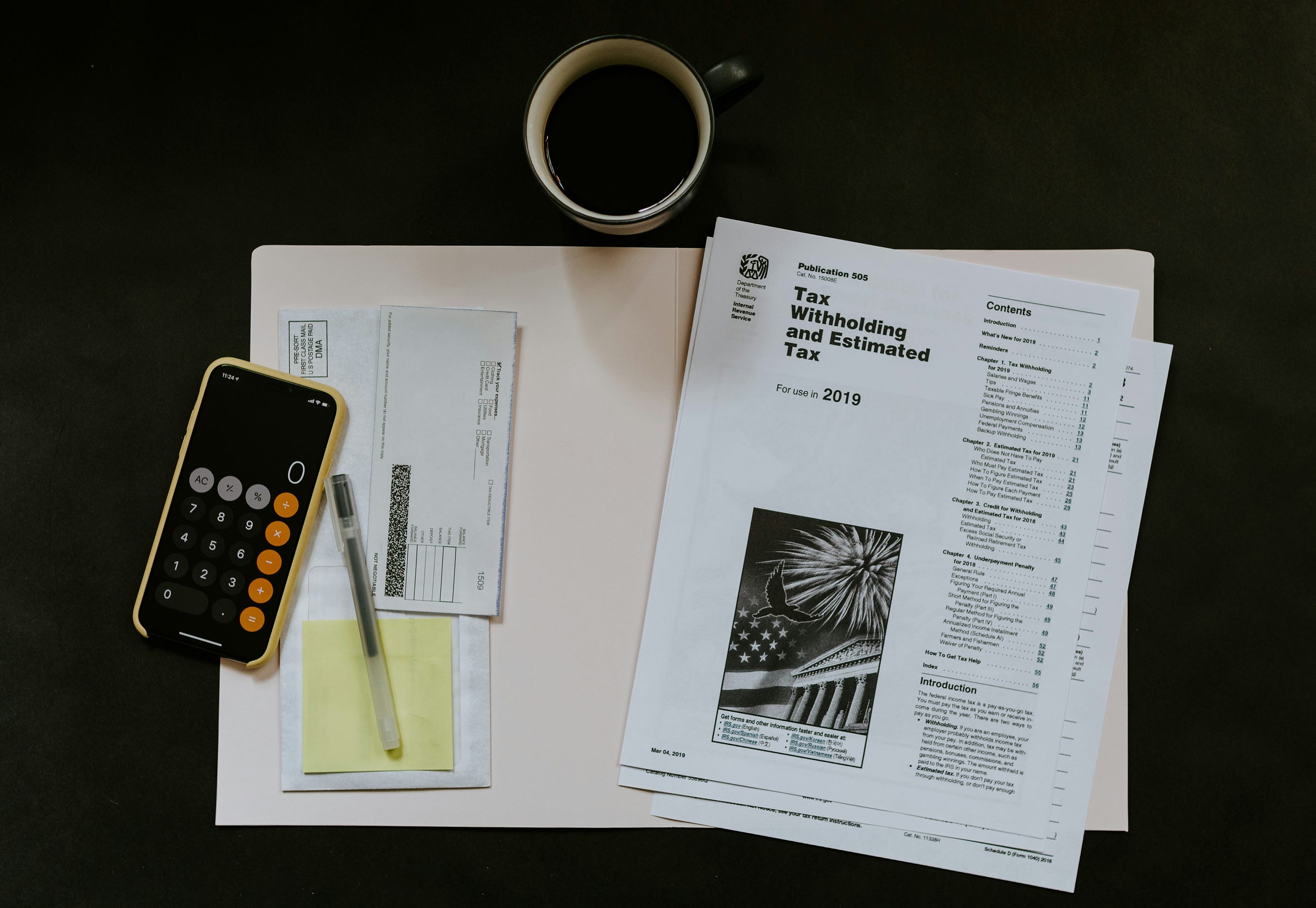
Leave a Reply